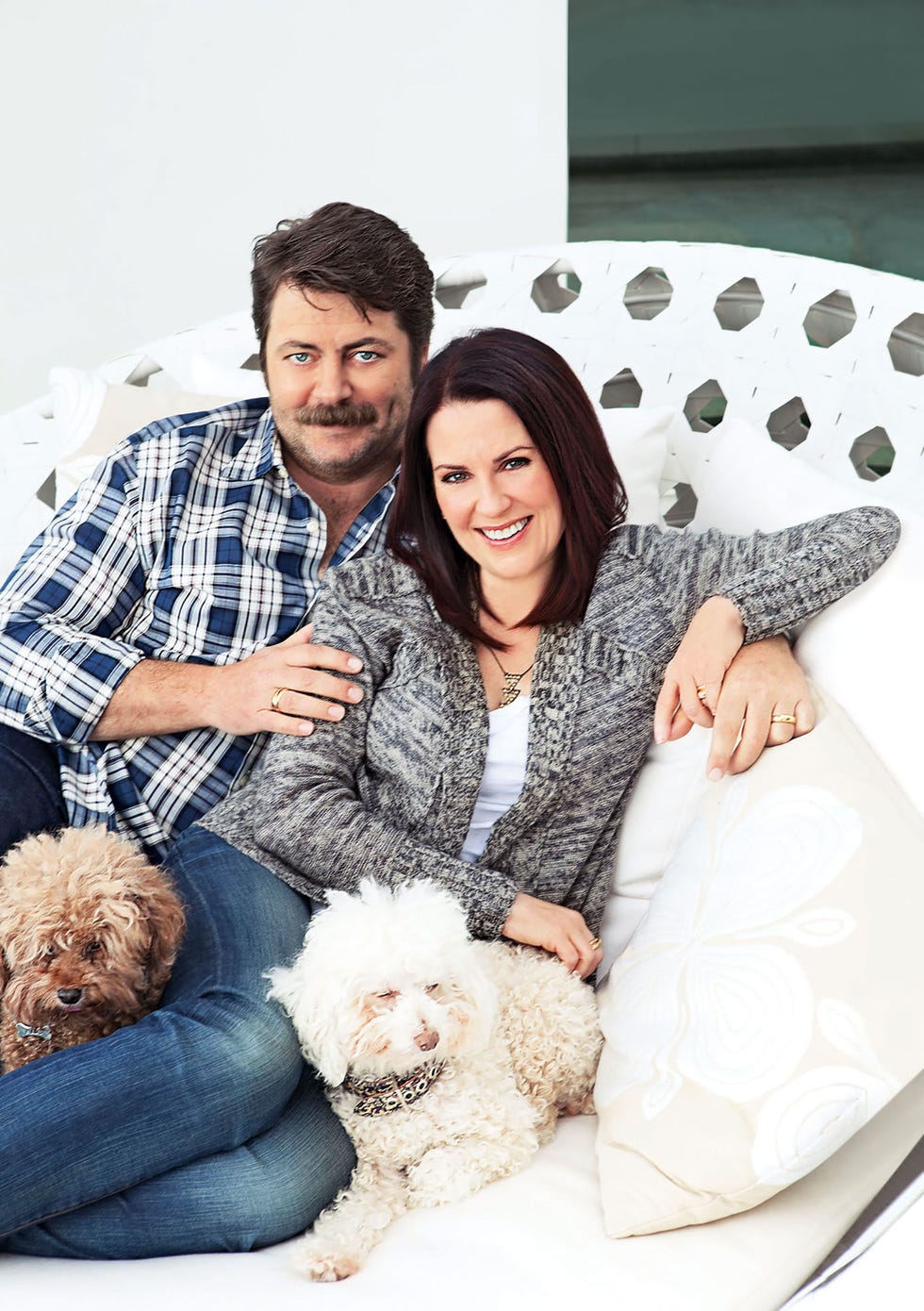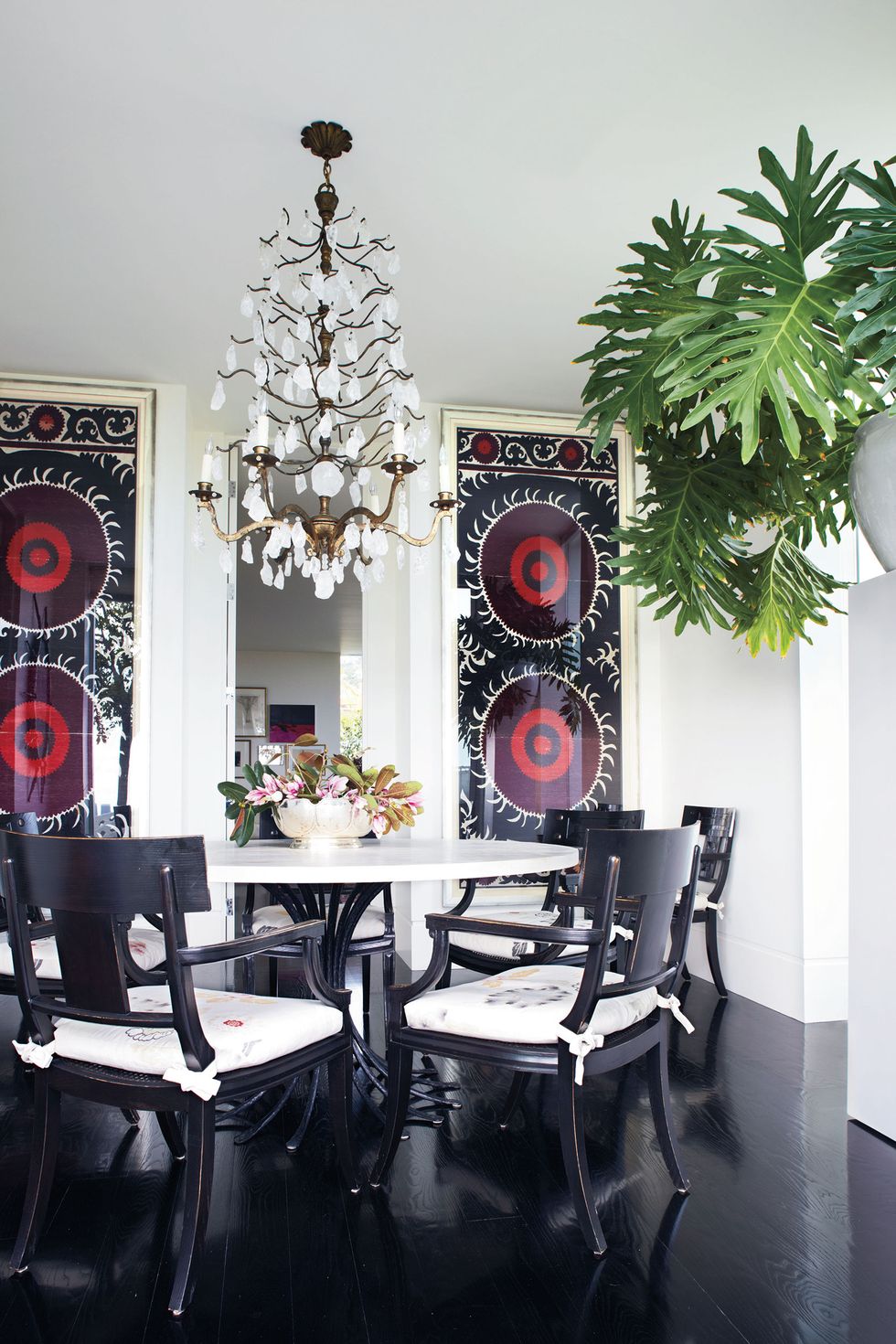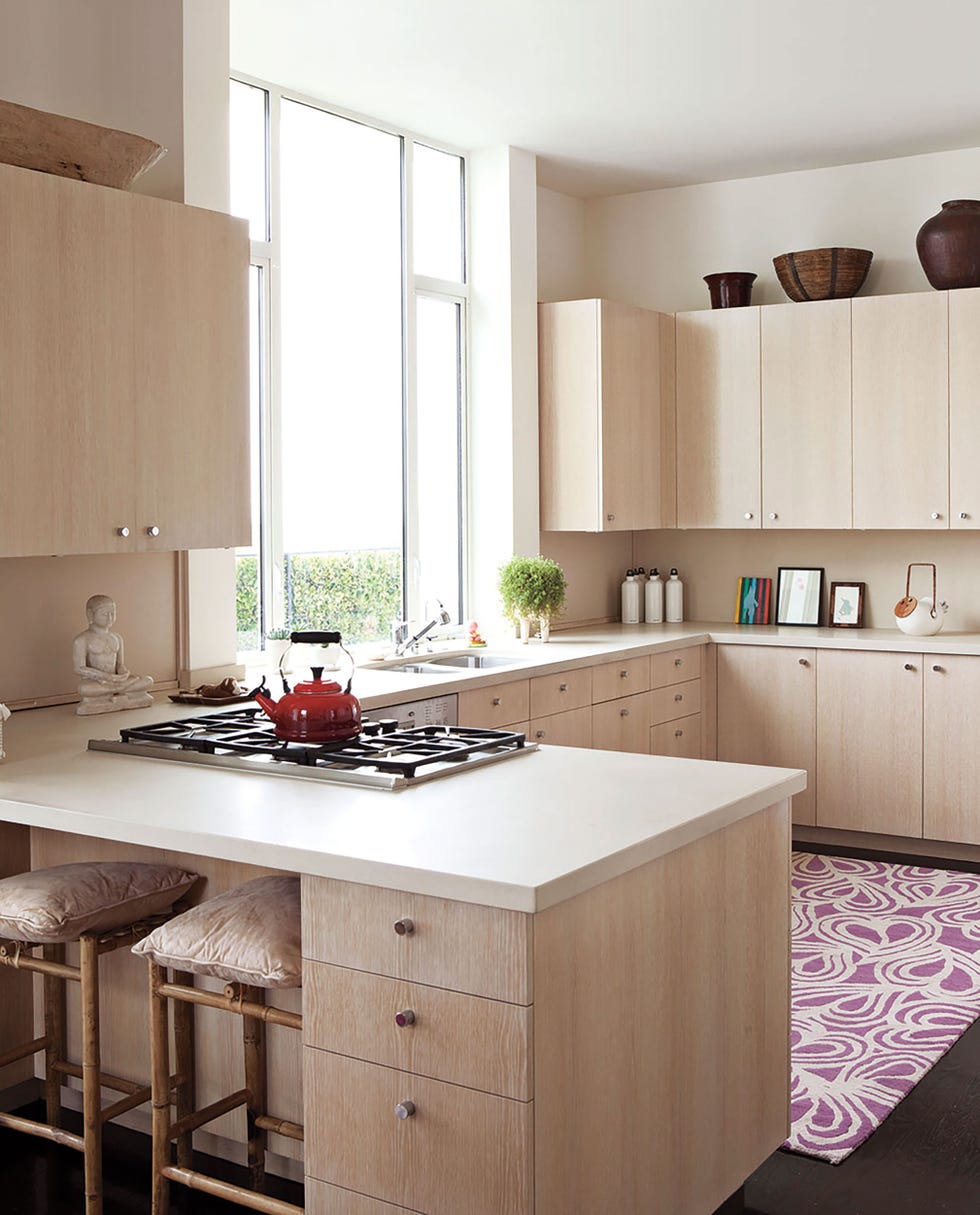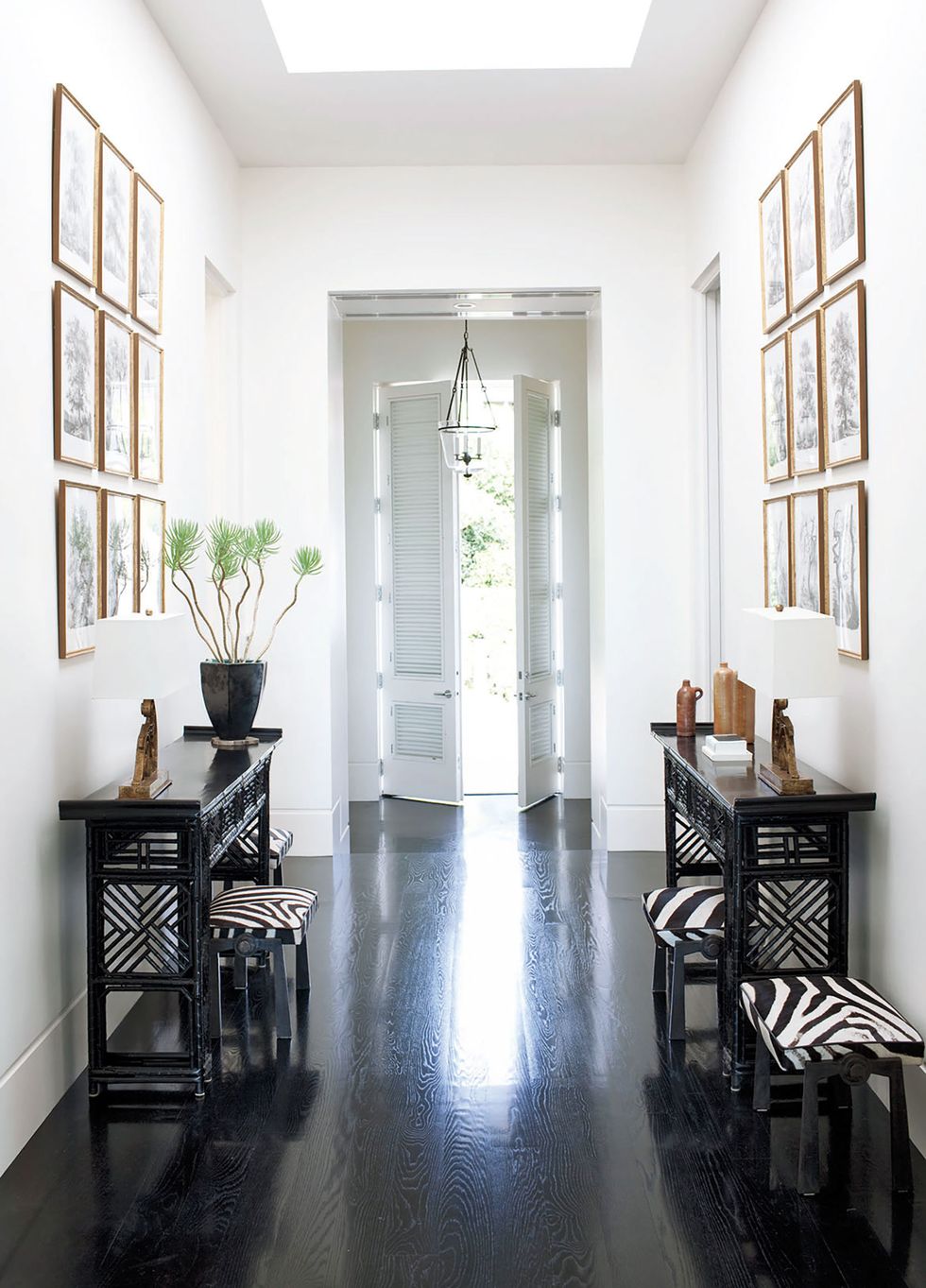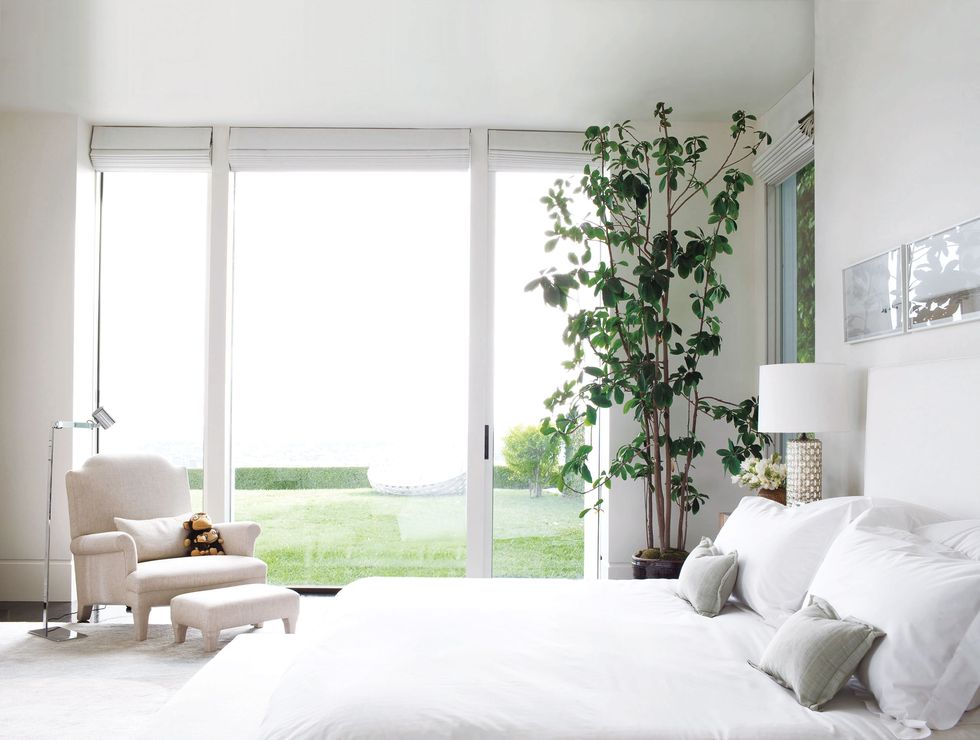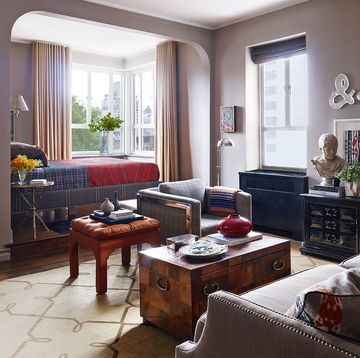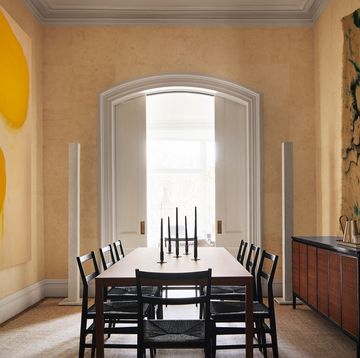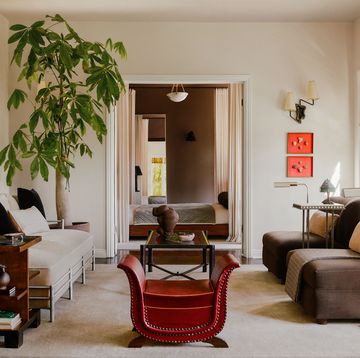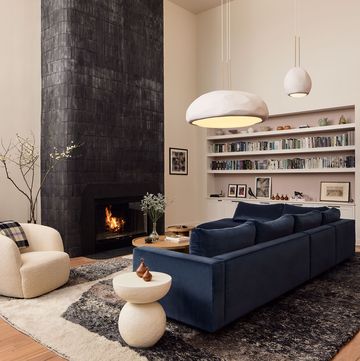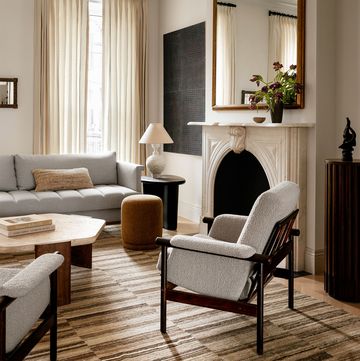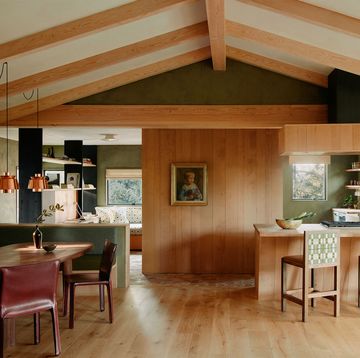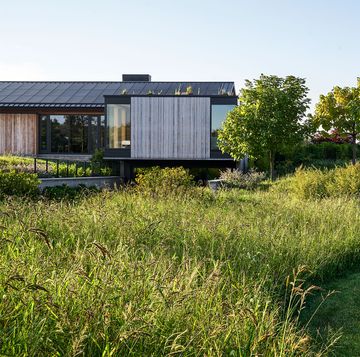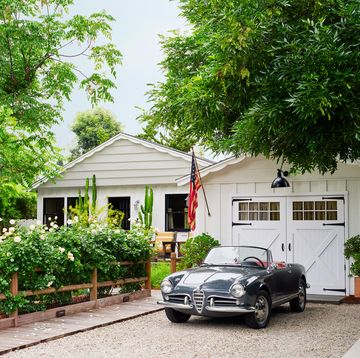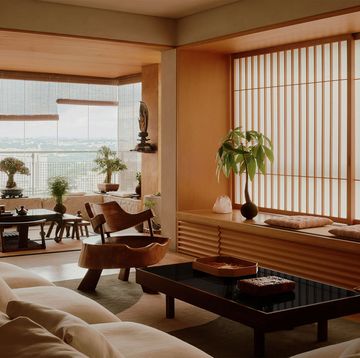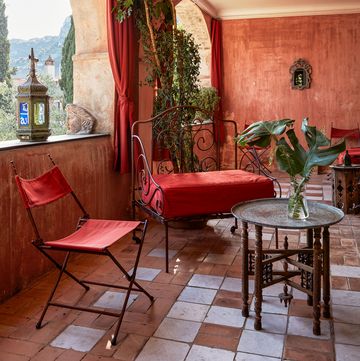This story originally appeared in the September 2010 issue of ELLE DECOR. For more stories from our archive, subscribe to ELLE DECOR All Access.
You’ll find only one television in the cheerful Hollywood home of actors Megan Mullally and Nick Offerman. It’s a modestly scaled set, and it’s sequestered in an armoire in the master bedroom. There’s no futuristic plasma number in the bathroom, no framed monitor above the fireplace, and no screening room with plush tiered seating and a popcorn-and-candy counter.
In an industry town like Los Angeles, having just a single television in a modern three-bedroom house is tantamount to treason—especially for two stars of the medium. But Mullally, who etched herself into the popular imagination as the boozy, wisecracking harpy Karen Walker on Will & Grace, and Offerman, who plays the dyspeptic libertarian Ron Swanson on NBC’s Parks and Recreation, aren’t being deliberately contrary or twee. They just happen to like watching television in bed.
“We’re basically homebodies and nesters,” Mullally says. “We’re not interested in the real estate roulette that goes on in L.A. People here get addicted to bells and whistles and flipping houses. That’s just not us.”
The couple purchased their home in 2003 after living in a West Hollywood duplex they decorated with flea-market finds and other humble treasures. They were attracted to this house’s crisp modern architecture, the generous scale of its rooms, the sensible symmetrical floor plan, and glorious views that capture the sprawling L.A. basin, Century City, downtown high rises, and, off in the distance, a swath of the Pacific Ocean.
“I never had the right kind of space or the resources to do a house of my own,” Mullally says. “Nick turned the project over to me completely. He appreciates form and design, but he made a very smart move letting me have my way with the aesthetics.”
Mullally began the renovation by herself, tackling the kitchen and dining areas first, but several months into the process she stumbled upon the eponymous shop of designer Ames Ingham. It was a fortuitous encounter. Ingham, an alumna of the offices of two well-known L.A. decorators—Suzanne Rheinstein and Joe Nye—had, in a previous life, belonged to the same theater company as Mullally and Offerman. In short order, the reacquainted friends were collaborating once again.
“It was a very nice fit,” Ingham recalls. “Megan really gets into the design process. She’s incredibly knowledgeable and curious, and she doesn’t mind taking the time to get things right.”
The house’s most eye-catching design feature is also its most basic—Mullally and Ingham refreshed the walls with a coat of bright-white paint and refinished the floors with an ebony stain for contrast. That device of interior chiaroscuro set the stage for a decorative drama of contrasts: restrained modern furniture accented with highly figured Asian antiques; neutral fabrics and finishes with occasional pops of intense color and graphic rugs; and comfortable, introspective rooms with expansive views of city and sky.
Their strategy of joining seemingly incongruous elements is perhaps best exemplified by the juxtaposition of a fuchsia Pierre Paulin chair with an African stool and a pair of antique carved-wood wings from a Parisian opera house in the guest bedroom—it’s a knockout. Another surprise awaits visitors in the small powder room off the entry hall, where the walls are upholstered in a flamboyant peacock-feather fabric created by the eccentric Australian designer Florence Broadhurst. Even the white chairs in the living room sport pillows covered in a multicolor print by Swedish designer Josef Frank.
“The house used to be much more subdued. It’s still peaceful, but adding contrast and a few bold gestures made it feel more contemporary,” Ingham says.
Offerman, a dedicated furniture maker and woodworker, contributed to the mix with a few small pieces of his own design. The Offerman Woodshop website amply demonstrates his talents and tastes (don’t miss the amusing “Beefcake” section, which is labeled “For the Ladies” but will surely appeal to anyone with a sense of humor).
Apart from the eclectic furnishings, the house is animated by personal collections, including an enviable array of first editions—with concentrations of Charles Addams and Edward Gorey—in the library and stacks of vintage comic books in the guest room. The art collection, intriguing for its idiosyncrasy, features a roster of artists who rarely find themselves sharing the same walls: Yoshitomo Nara, Grandma Moses, Peter Doig, Karen Kilimnik, Odilon Redon, and Yoko Ono, to name a few. What connects them is an emphasis on portraiture and landscapes. “Provocative avant-garde art isn’t for me,” Mullally says. “I never understood why anyone would want a picture of a person getting shot in the head on their wall. I suppose it’s just not my thing.”
Decorating, however, clearly is. And Mullally applies herself far more diligently and creatively than her TV character ever did. “I absolutely love it,” she says. “If I had to pick a second career, this would be it. I felt such a void in my life after finishing this house. We’re toying with the idea of Ames hiring me as an assistant.”


